
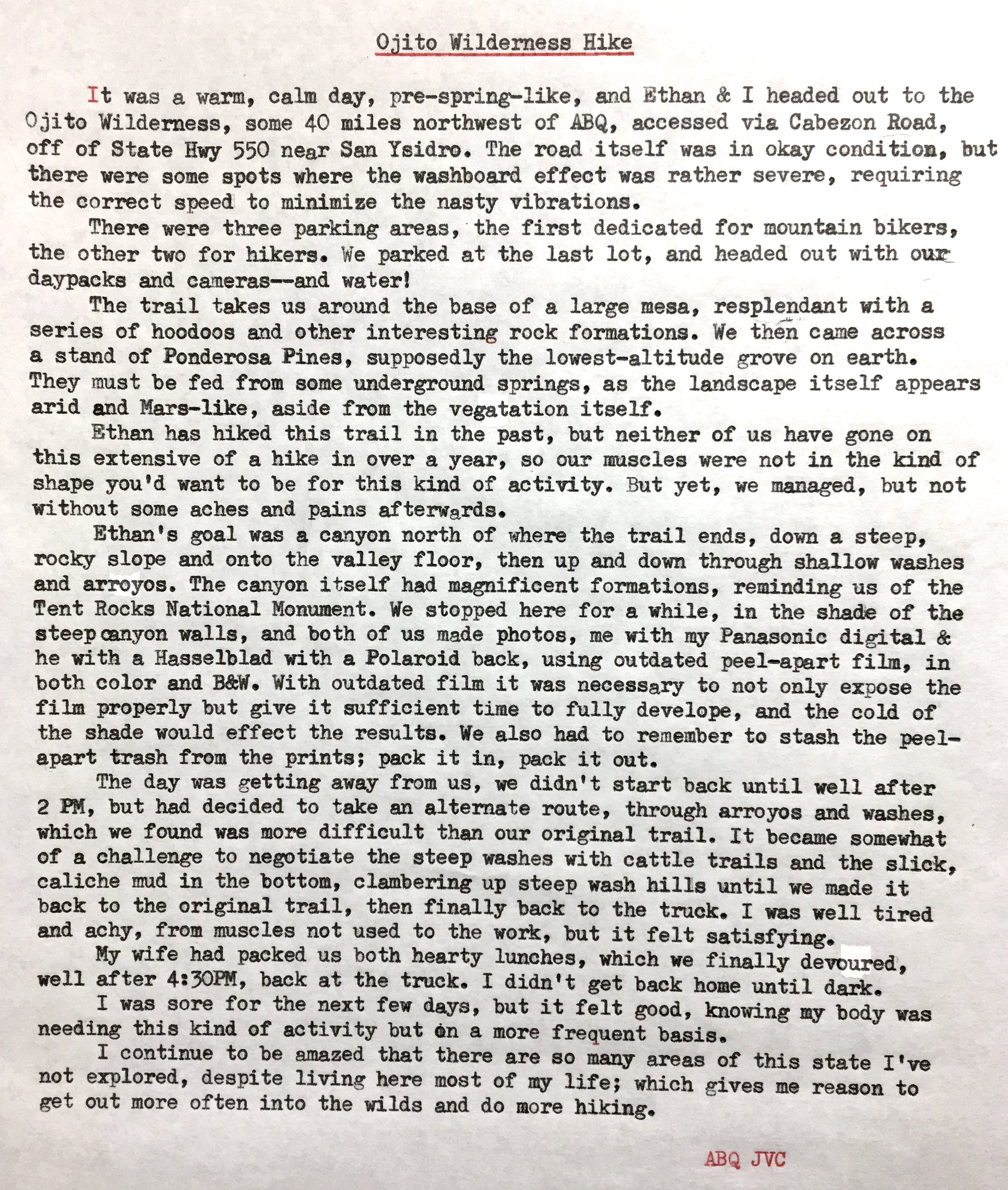
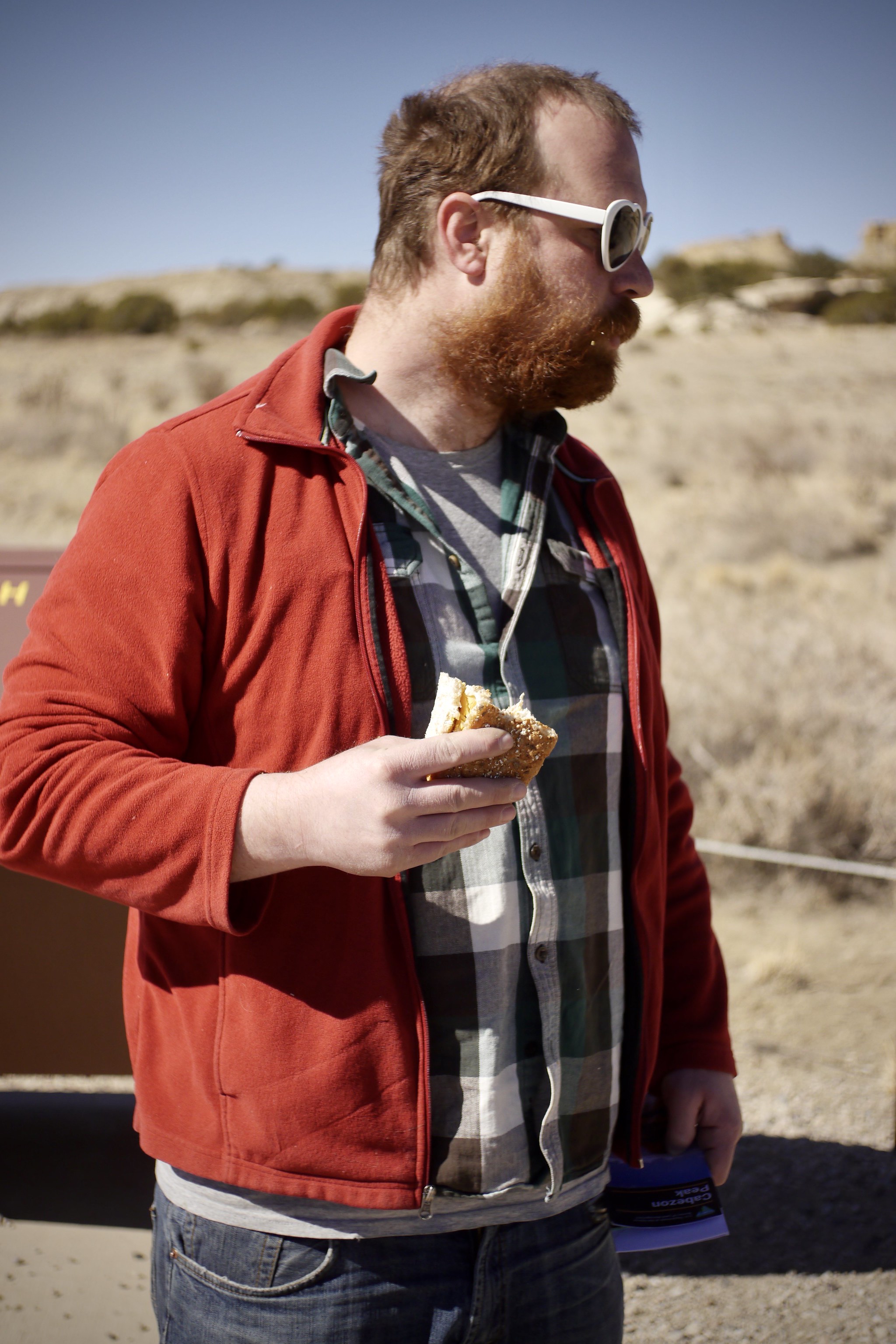
Ethan grabbed a to-go sandwich at the Warrior Gas Station in the town of Bernalillo, on the way out to the Ojito. I'd already eaten that morning before leaving, so I had the joy of watching him eat his meal, featuring almost-frozen artifical cheese. Yum!
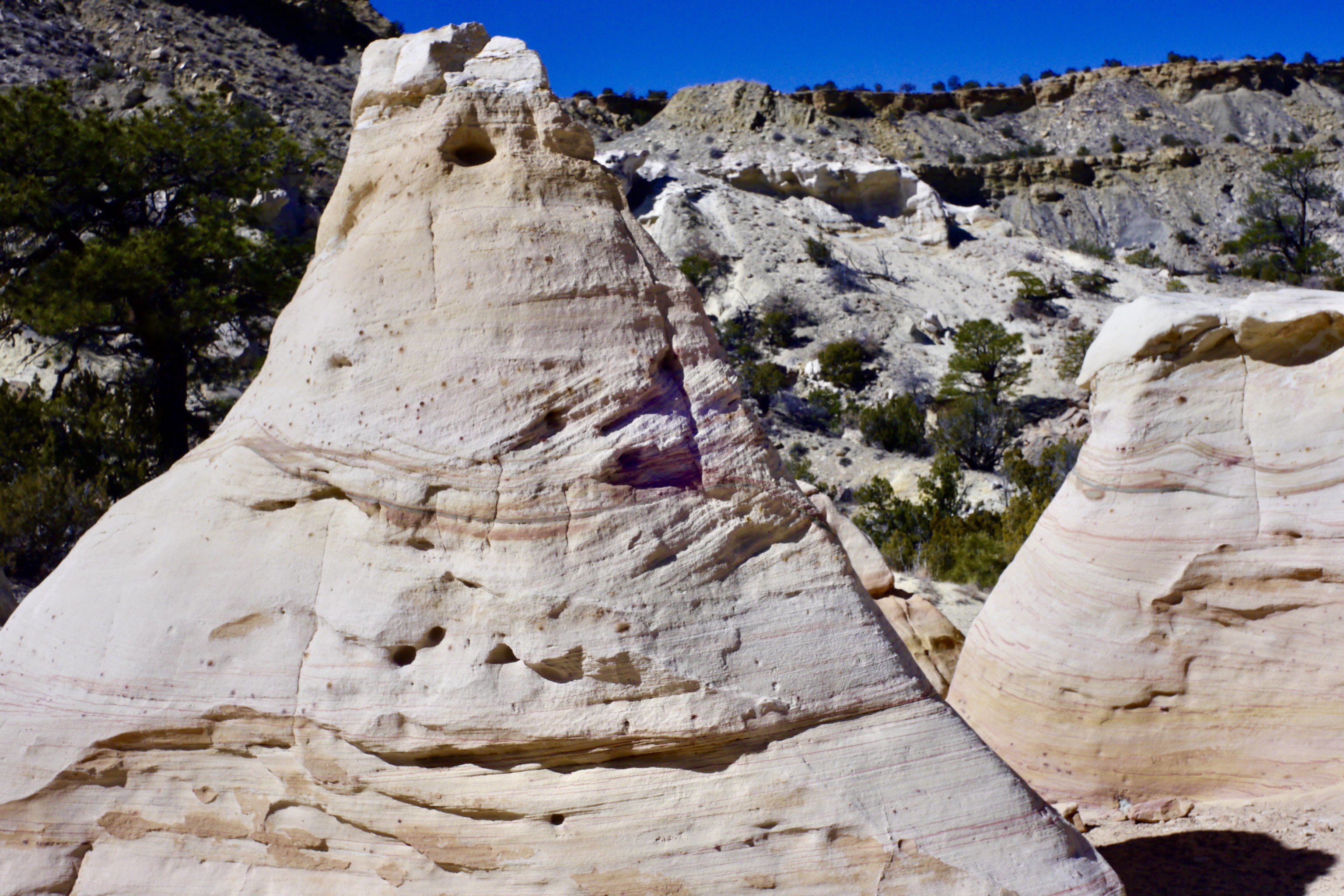
Our trail took us along the edge of the large mesa (in the background, above), through areas of dramatically sculpted rock formations.
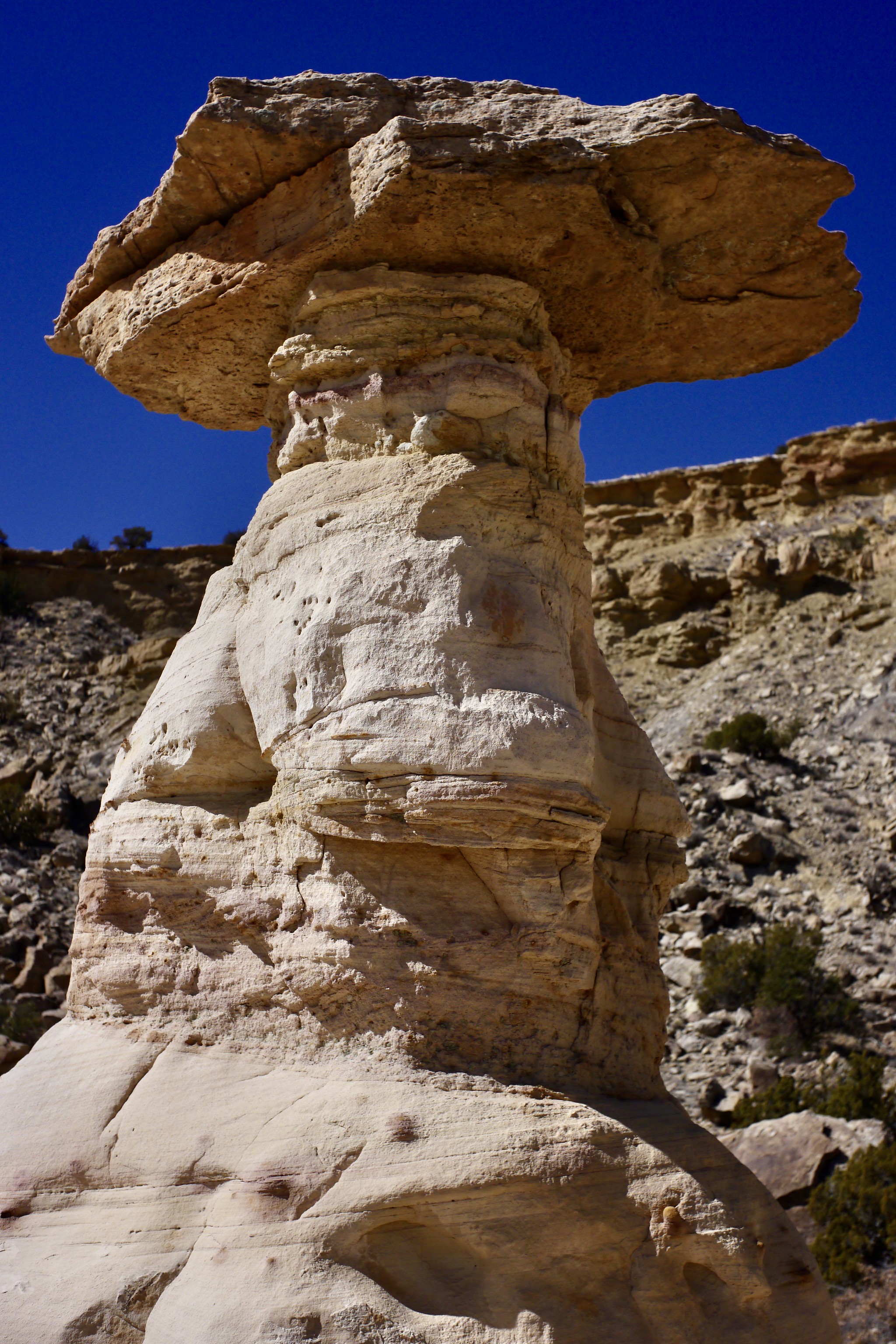
These eroded formations, called hoodoos, are commonly seen in the Ojito, as well as other parts of northwestern New Mexico.
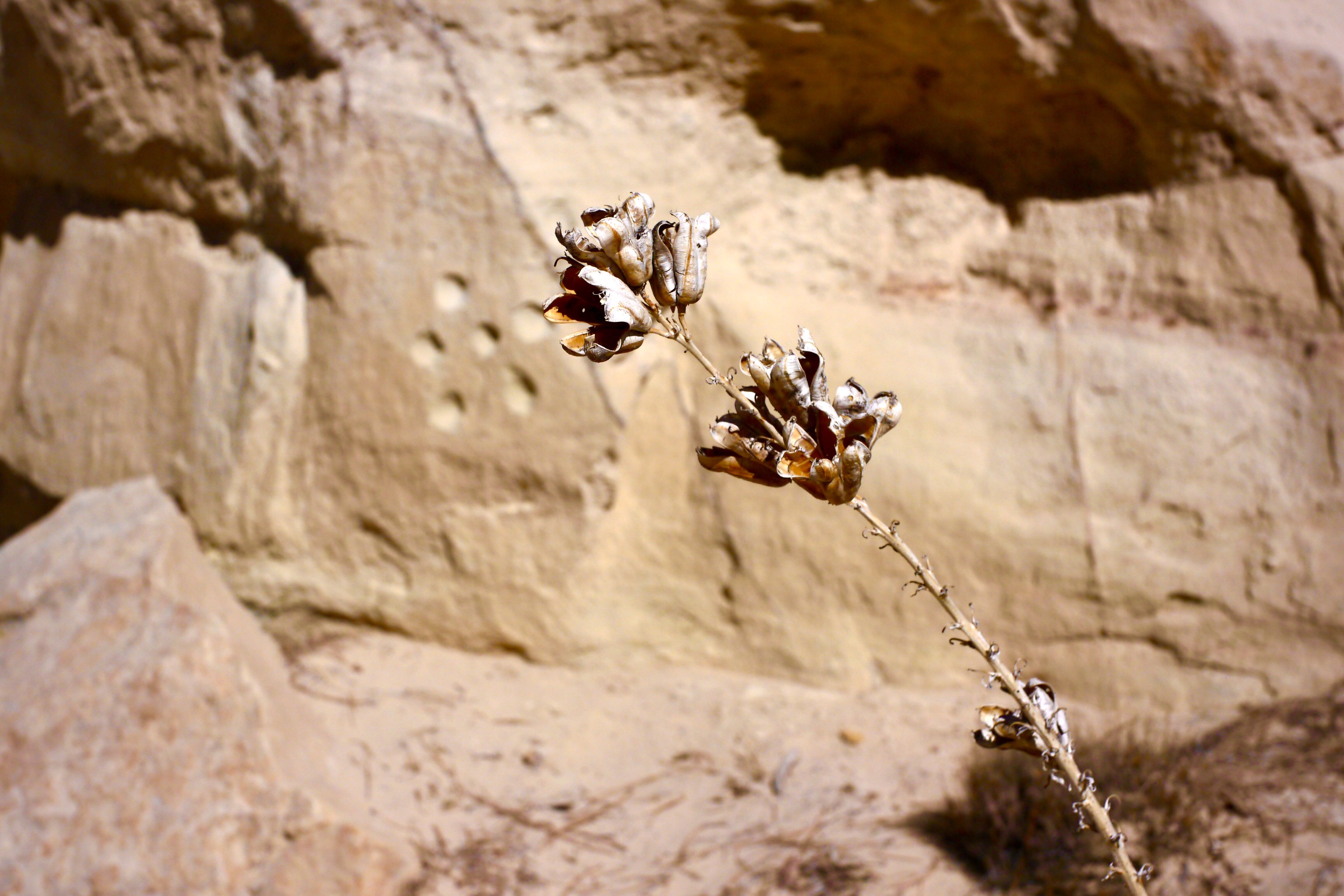
Flowering yucca, the official New Mexico state flower. Notice the strange pentagonal formation of depressions in the rock face behind...
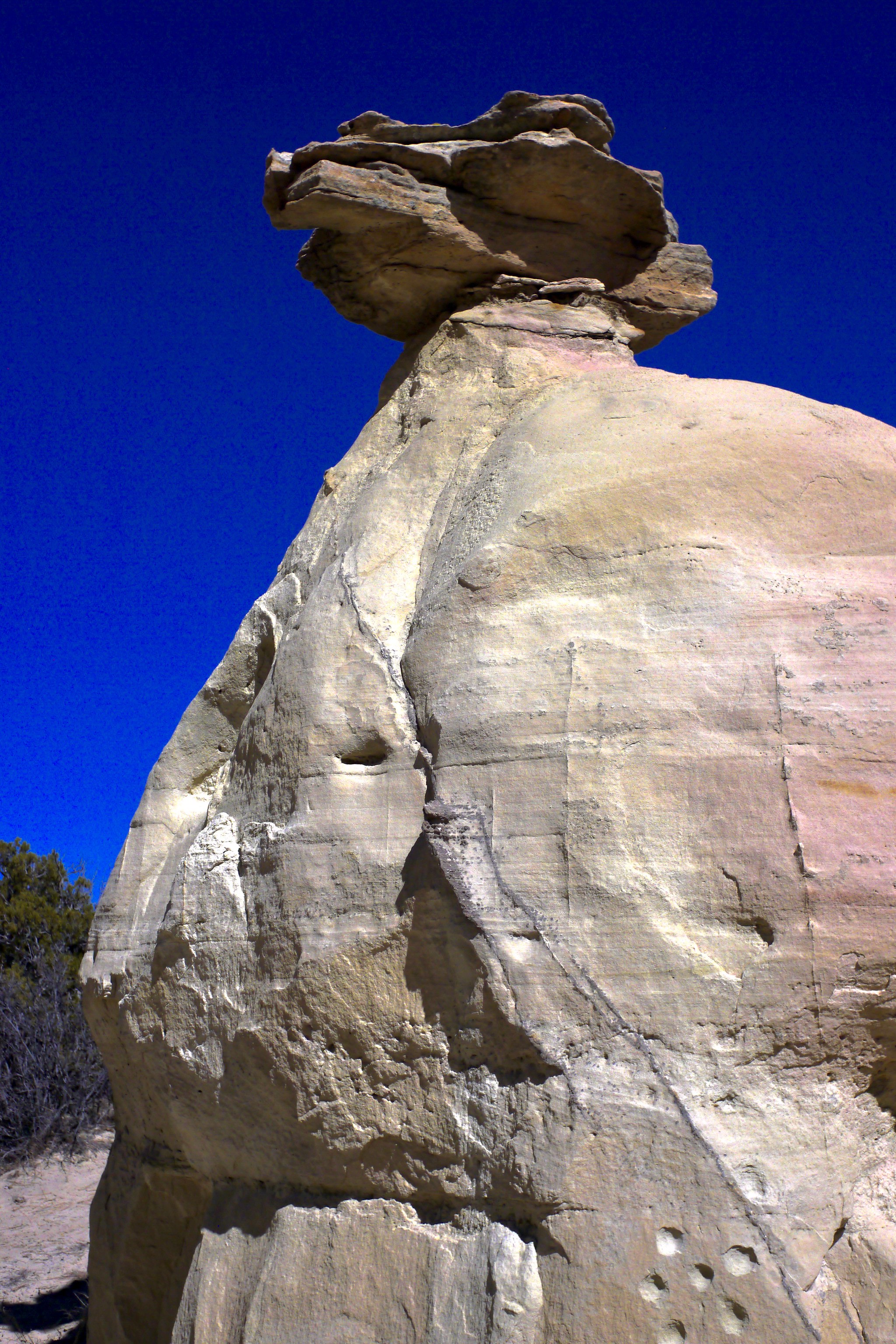
...which is at the base of this hoodoo. Manmade, or otherwise?

Our trail takes us through this stand of ponderosa pines; these supposedly are the lowest altitude ponderosas in the world, fed by some underground springs not readily evident by the dry terrain on the surface.

Ethan came equipped with a Hasselblad and Polariod back, plus a hearty supply of outdated peel-apart film. We both tried our hand at instant landscape photography.

After going off-trail, cross-country, we rested at our destination, this scenic canyon, where we took the majority of the Polaroids.

Ethan scouting for his next shot.

The formation on the right looks like a snail's head. One's imagination can go wild in these badlands.
As I alluded to earlier, I was out of shape for this hike, but glad I took it. This gives me encouragement to keep doing this as often as possible.
A big thanks to Ethan Moses for inviting me along, and being tour guide.
Looks like a wonderful place for a hike.
ReplyDeleteYour statement about not knowing all the areas of your state brought back my words of my youth when I would tell others "Why should I leave PA? There are so many places to see and hike there is no need to go any place else." I left and never did see all that I could. Not only there, but in the 4 places where I did live. I'm always amazed at the Western U.S.A. though.
In your typecast, I am amused by the diagonal line from the middle of the 5th paragraph right margin, to the end of the article, except for 4 lines that are interrupted by text. To try and create that on purpose would take you all day.
ReplyDeletePhil
Wow, good eye, Phil! Yea, that would be hard to preplan. Though it makes me think about creating typewritten text purposely designed with these kinds of patterns of spaces.
ReplyDeleteThis is wonderful. I've taken a few all-day hikes. The most memorable--and strenuous--was when my uncle and I joined a large group of experienced hikers in Twentynine Palms. It's important to note that they were experienced. I was not. The extent of my hiking was a quick hike up Mount Twobit--more of a large hill, really--the foothill of which my childhood home sat upon. One could reach the peak in under an hour. I would love to do more hiking--I could certainly use the exercise. But I also enjoy "street hiking". Thanks for sharing the wonderful photos!
ReplyDeleteI'm jealous! Would love to see and hike there one day. Does Ethan use the modern Polaroid film at all, or is this possible. How much better are the results with a Hassie than say an old Polaroid camera?
ReplyDeleteDon, the new Polaroid takes upwards of half an our to fully develop; is somewhat light sensitive during that process and needs to be kept near room temperature else it takes even longer. The old stuff, if the chemical pod is still good, is better, but if it’s too old you get wonky development streaks. The advantage of the Hasselblad is manual exposure control via a handheld light meter, and great optics. But the images on the print are 2-1/4” square, like a contact print from medium format, smaller than from a Polaroid camera itself.
ReplyDelete